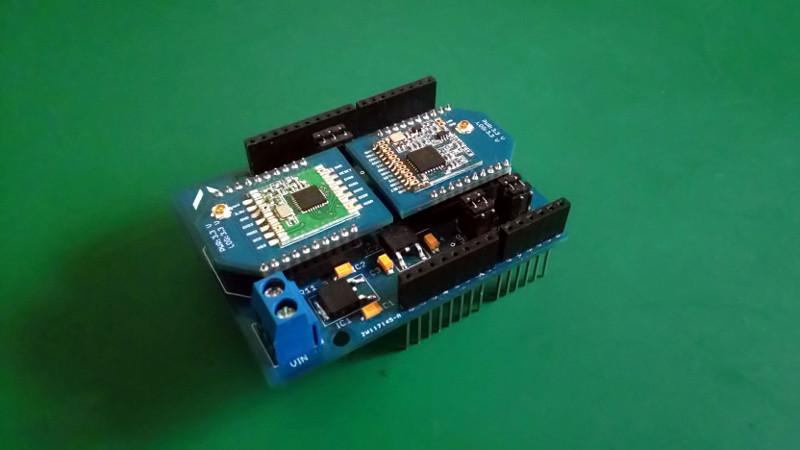There are a multitude of radio shields for the Arduino and similar platforms, but they so often only support one protocol, manufacturer, or frequency band. [Jan Gromeš] was vexed by this in a project he saw, so decided to create a shield capable of supporting multiple different types. And because more is so often better, he also gave it space for not one, but two different radio modules. He calls the resulting Swiss Army Knife of Arduino radio shields the Kite, and he’s shared everything needed for one on a hackaday.io page and a GitHub repository.
Supported so far are ESP8266 modules, HC-05 Bluetooth modules, RFM69 FSK/OOK modules, SX127x series LoRa modules including SX1272, SX1276 and SX1278, XBee modules (S2B), and he claims that more are in development. Since some of those operate in very similar frequency bands it would be interesting to note whether any adverse effects come from their use in close proximity. We suspect there won’t be because the protocols involved are designed to be resilient, but there is nothing like a real-world example to prove it.
This project is unique, so we’re struggling to find previous Hackaday features of analogous ones. We have however looked at an overview of choosing the right wireless tech.
















Neat and cost effective. You can even add a GSM/GPRS shield for some quad band GSM action along with hacking on a CDMA/TDAM/FDMA module that can be found though not specifically that I’ve seen for the Arduino.
Edit: Typo on the “…TDAM…”, should read “…TDMA…”
Also, I didn’t note OFDM for some systems is used also. Not sure how common like the multiple access protocols; though I’m thinking other than libraries and duplex modes on the transceiver, the main objective is the frequency range and bandwidth… maybe dynamic range or noise floor too.
I didn’t realize there are the RFM69 modules also. That module looks interesting as I have an Acoustic Research audio transmitter or two and have used with the RTL-SDR only so far… plus some other transmitter modules in that range.
Will be neat to see how this develops. If only the video shields had more potential for image transfer, though coupled with a microcomputer… the microcontroller(s) can be used for the transmission process(es).
Thanks for sharing.
Was just reminded that the ARDUINO MKR VIDOR 4000 can handle video now looks like and the video shield I was thinking of (https://hackaday.com/2011/03/24/video-experimenter-shield/) can be substituted for a pure Arduino microcontroller scheme: https://hackaday.com/2018/07/30/hands-on-with-new-arduino-fpga-board-mkr-vidor-4000/
Cause the FCC module certification don’t like it?